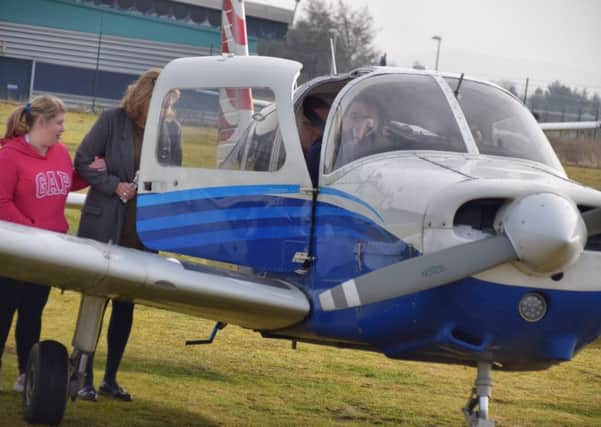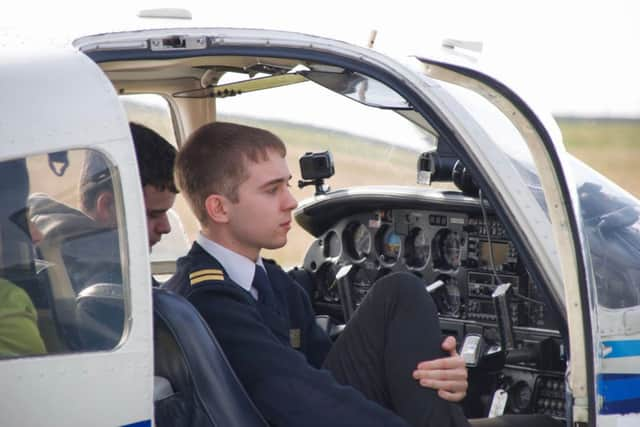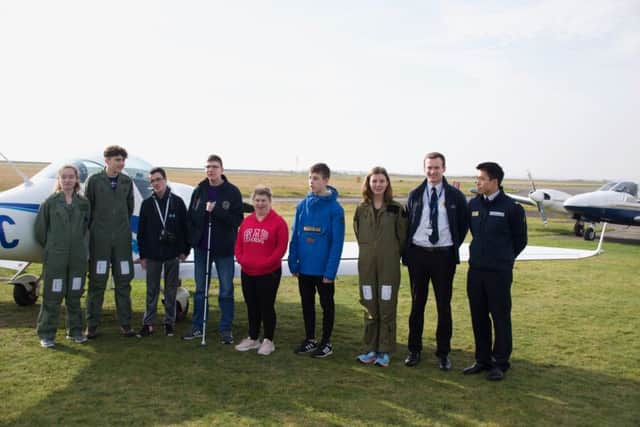Visually impaired Edinburgh and Lothian youngsters learn to fly plane


The Air Cadets ‘Flying Aces’ initiative got off the ground two years ago as a way of boosting confidence and employability prospects for young people from disabled or disadvantaged backgrounds.
And now a new band of prospective pilots have been handed the controls to training aircraft thanks to the scheme, which takes off from Tayside airport in Dundee.
Advertisement
Hide AdAdvertisement
Hide AdYoungsters are sent up with an experienced pilot, before taking over the reigns while they are in the sky.


They are then guided through the rest of the flight by instructors before safely bringing the Piper Warrior planes down on the runway.
Daryl Stewart, from Edinburgh, admitted he was anxious before being handed the controls, but admitted he enjoyed the experience.
Daryl, 17, who has who has a cerebral visual impairment, said: “I really looked forward to this. It was a great chance to gain a new experience and learn new skills. I think I was a bit nervous at first when I took over the controls, but I’m never a nervous passenger before when flying on planes so I was ok.”
Advertisement
Hide AdAdvertisement
Hide AdGroup Captain Jim Leggat, regional commandant for the Air Cadets, said the experience offered more for those with visual impairments, adding a lack of sight did not place them at a disadvantage.


He said: “We encourage young people to think: If I can fly an aeroplane- is there anything in life I can’t do?”
“We know that blind and partially-sighted flyers are likely get much more out of the experience than those who do have sight. They ‘feel’ flight and appreciate the various gravitational and other forces acting on the aircraft that are often lost on others. Here, they had a chance to pull back on the control column and feel the aircraft rising. They also experienced turning, flying level, climbing and descending.”
He added: “It’s worth pointing out, too, that - while most training flights take place below cloud-level - in cloud, and at night, sight is actually of very little help to you.”
Advertisement
Hide AdAdvertisement
Hide AdThe single-engine, propeller-driven aircraft are usually used for training leisure pilots and have space for a pilot plus three other passengers.
The occupants swap round after each flight to ensure every member of the crew has an opportunity to fly.
Daryl was joined by Taylor Richardson, 14, from Broxburn, Robbie Baxter, 16, from Armadale and Chloe Downie, 21, from East Lothian on his flight.
Jane Coates, RNIB Scotland community facilitator, said: “This was a wonderful opportunity for our young people to try something they might otherwise have never been given the chance to do, because of their sight loss.”
Advertisement
Hide AdAdvertisement
Hide Ad“What youngster wouldn’t be thrilled to fly a plane alongside a pilot used to teaching novices?”
She added: “Flying Aces have gone out of their way to make this dream a reality.”